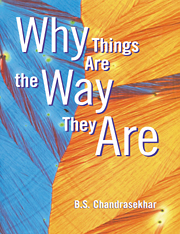Book contents
- Frontmatter
- Contents
- PREFACE
- I INTRODUCTION
- II CRYSTALS
- III PARTICLES AND WAVES
- IV THE ATOM
- V STATISTICAL PHYSICS
- VI THE QUANTUM MECHANICAL CRYSTAL
- VII COPPER WIRES AND GLASS RODS
- VIII SILVER SPOONS AND PLASTIC SPOONS
- IX GLASS PANES AND ALUMINIUM FOILS
- X ELECTRIC BULBS AND INSULATED CABLES
- XI MAGNETS
- XII SUPERCONDUCTORS
- XIII CONCLUSION
- GLOSSARY
- INDEX
VII - COPPER WIRES AND GLASS RODS
Published online by Cambridge University Press: 20 October 2009
- Frontmatter
- Contents
- PREFACE
- I INTRODUCTION
- II CRYSTALS
- III PARTICLES AND WAVES
- IV THE ATOM
- V STATISTICAL PHYSICS
- VI THE QUANTUM MECHANICAL CRYSTAL
- VII COPPER WIRES AND GLASS RODS
- VIII SILVER SPOONS AND PLASTIC SPOONS
- IX GLASS PANES AND ALUMINIUM FOILS
- X ELECTRIC BULBS AND INSULATED CABLES
- XI MAGNETS
- XII SUPERCONDUCTORS
- XIII CONCLUSION
- GLOSSARY
- INDEX
Summary
Elasticity, plasticity and brittleness
We have looked in the preceding chapters at the atomic structure of solids, described in terms of quantum mechanics. We shall now see how this description explains why solids have the various properties that they exhibit. We begin by looking in this chapter at a group of properties that defines what a solid is as distinguished from a liquid or a gas. The atoms in a solid stay where they are, and do not slide past one another as in a liquid, or fly about in the enclosing volume as in a gas. A solid holds its size and shape, and resists attempts to change them. The ideal solid is a perfect crystal, whose atoms are bound to one another by the electrical forces among their electrons and nuclei. It is as if there were springs connecting each atom to neighbouring atoms. Any stretching or compression produced by an applied force is taken up by the springs, and the solid returns to its original state when the force is removed. The response of a real solid to such a force, however, is more complicated, and I illustrate it with the following experiments.
I take a copper wire and a glass rod, both of the same size. If I grasp the ends of the copper wire and bend it just a little and let go, it springs back to its original shape. If I bend it more than a certain amount and then let go, it stays bent.
- Type
- Chapter
- Information
- Why Things Are the Way They Are , pp. 133 - 144Publisher: Cambridge University PressPrint publication year: 1997



